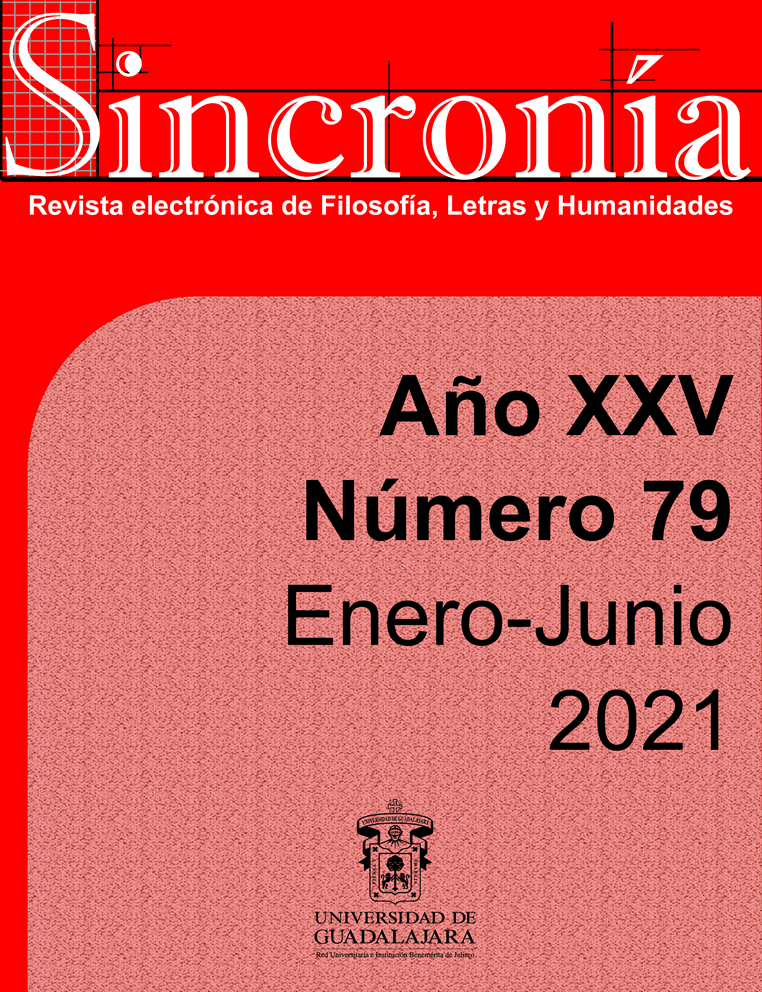Modernity, history and emancipation in Siegfried Kracauer’s Theory of Film
Keywords:
Critical Theory., Modernity., Rationalization., Crisis of Experience, Contingency.Abstract
This paper analyzes S. Kracauer’s Theory of Film, in terms of the definition of a non-systematic critical theory of modernity. Far from an aesthetic theory of the cinematographic medium, this approach makes a deep criticism against the historically peculiar forms assumed by the modern experience. Kracauer defines cinema as the expression of a paradoxical society, which exposes both its mechanisms of oppression, and the emancipatory potentials that are immanent to it. In short, Kracauer’s approach to cinema points to the possible transformation of the present towards a post-metaphysical organization of the social world.
Downloads
References
Adorno, T. W. (2003). Notas sobre Literatura. Obra completa. Tres Cantos: Akal.
Agard, O. (2016). Cinéma et modernité chez Siegfried Kracauer. Bulletin d'Analyse Phénoménologique, 4, pp. 228-248.
Benjamin, W. (2019). La obra de arte en la época de su reproductibilidad técnica. Buenos Aires: Ediciones Godot.
Despoix, P., & Schöttler, P. (2006). Siegfried Kracauer, penseur de l'histoire. París: Presses Université Laval.
Díaz, S. (2015). Historia y teoría crítica. Lectura de Siegfried Kracauer. Madrid: Biblioteca Nueva.
Elsaesser, T. (2014). Siegfried Kracauer’s affinities. NECSUS. European Journal of Media Studies, 3(1), pp. 5-20.
Fraser, N. (2007). Identity, exclusion, and critique: a response to four critics. European Journal of Political Theory, 6(3), pp. 305-338.
Gilloch, G. (2015). Siegfried Kracauer. Cambridge: John Wiley & Sons.
Hansen, M. (1991). Decentric perspectives: Kracauer's early writings on film and mass culture. New German Critique (54), pp. 47-76.
Hansen, M. (2012). Cinema and Experience: Siegfried Kracauer, Walter Benjamin, and Theodor W. Adorno (Vol. 44). Berkeley: Univ of California Press.
Harbord, J. (2007). Contingency's Work: Kracauer's Theory of Film and the Trope of the Accidental. New Formations (61), pp. 90-103.
Kracauer, S. (1960). Theory of film: the redemption of physical reality. New York: Oxford.
Kracauer, S. (1985). De Caligari a Hitler: historia psicológica del cine alemán. Barcelona: Paidós.
Kracauer, S. (1995). The mass ornament: Weimar essays. Massachusetts: Harvard University Press.
Kracauer, S. (1998). The salaried masses: Duty and distraction in Weimar Germany. Londres: Verso.
Kracauer, S. (2006). Estética sin territorio. Murcia: Colegio Oficial de Aparejadores y Arquitectos Técnicos.
Kracauer, S. (2008). Los empleados: un aspecto de la Alemania más reciente. Barcelona: Gedisa.
Kracauer, S. (2010). Historia: Las últimas cosas antes de las últimas. Buenos Aires: Las cuarenta.
Lukács, G. (2010). Teoría de la novela: Un ensayo histórico-filosófico sobre las formas de la gran literatura épica. Buenos Aires: Godot.
Machado, C., & Vedda, M. (2010). Siegfried Kracauer: un pensador más allá de las fronteras. In. Buenos Aires: Gorla.
Perivolaropoulou, N. (2004). Le travail de la mémoire: dans Theory of Film de Siegfried Kracauer. Protée, 32(1), pp. 39-48.
Rancière, J. (2001). La fable cinématographique. París: Seuil.
Schlüpmann, H. (1991). The Subject of Survival: On Kracauer's Theory of Film. New German Critique(54), pp. 111-126.
Traverso, E. (1998). Siegfried Kracauer: itinerario de un intelectual nómada. Valencia: Alfons el Magnànim.
Vedda, M. A. (2011). La irrealidad de la desesperación: estudios sobre Siegfried Kracauer y Walter Benjamin. Buenos Aires: Editorial Gorla.
Vedda, M. A. (2013). Calles sin recuerdo: la fenomenología de la gran ciudad en Siegfried Kracauer y Walter Benjamin. Impulso, 23, pp. 79-86.
Von Moltke, J. (2010). Ruin cinema. In J. H. a. A. Schönle (Ed.), Ruins of modernity (pp. 395-417). London: Duke University Press.
Downloads
Published
How to Cite
Issue
Section
License

This work is licensed under a Creative Commons Attribution-NonCommercial 4.0 International License.
You are free to:
- Share — copy and redistribute the material in any medium or format
- Adapt — remix, transform, and build upon the material
- The licensor cannot revoke these freedoms as long as you follow the license terms.
Under the following terms:
- Attribution — You must give appropriate credit , provide a link to the license, and indicate if changes were made . You may do so in any reasonable manner, but not in any way that suggests the licensor endorses you or your use.
- NonCommercial — You may not use the material for commercial purposes .
- No additional restrictions — You may not apply legal terms or technological measures that legally restrict others from doing anything the license permits.




























